I wanted something from the days of Windows 98 and the beginning of the era of Windows XP. For myself, I decided to use the term "Retro-computer 2000" - just a beautiful date. Like many others, I first decided to build the system on the Tualatin-1400 - as the latest and fastest Pentium3.
At first I thought of assembling with an emphasis on compactness, I even got a Dell desktop for this business. But in the process, I also wanted to have ISA in order to be able to put some old soundtrack. Or any ISA equipment at all. This changed the concept a little, the 815 chipset was no longer satisfying. The choice had to be between the 440BX and the Via Apollo Pro. I didn't want the first one because of the potential instability on the 133 bus, while the second one was more buggy. But it had an ISA bus. As a result, I began to look for a motherboard on ApolloPro with support for toilets.
When I looked at the flea markets again, I saw a Gigabyte 7IXE4 motherboard for Socket A. It was the motherboard of the first computer that I completely assembled myself - with my own money and from what I wanted, and not from what came to hand. Accordingly, the concept has changed once again - why is this Pentium3 if it is possible to build a computer on Athlon? Because retro computers are not primarily about performance, but about emotional response.
As a result, I decided to build a computer based on Gigabyte 7IXE4 with an Athlon Thunderbird processor. After assembly, I wondered if it was better or worse than the Pentium 3 Tualatin-1400S. Well, for a heap, I decided to check a couple more current configurations of the same time - Ahtlon XP 1700+ (which worked at almost the same frequency as the P3 - 1466) and Pentium 4 Northwood, which came out simultaneously with the Tualatin 1400. Well, figure out who here is the best Pentium 3.
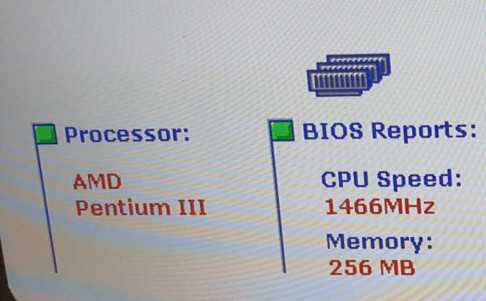
First, I will describe the main "contender" - given that this is a relative "dream computer", you can say a lot about it by going through all the components. Then I will describe the competitors, and then I run different tests.
Motherboard
I'll start with the board, since it prompted me to abandon the P3. Gigabyte 7IXE4 is a SocketA board based on the AMD 750 Irongate chipset - an approximate analogue of Intel's 440BX. Synchronous, bus frequency 100MHz, AGP 2x (3.3V only), PC100 memory, UDMA66. When I bought this motherboard somewhere in the first half of 2001, it was already on the verge of obsolescence. VIA KT133 had AGP 4x, support for up to 1.5 gigabytes of RAM, built-in sound. But, as I said, the glory of the glucodrome lasted for the VIA chipsets, plus I was a poor student, so I was financially constrained and it was always nice to save a dozen or two bucks, and AMD750-based motherboards were cheaper. Since then, saving on motherboards has echoed to me more than once, but that's another story.
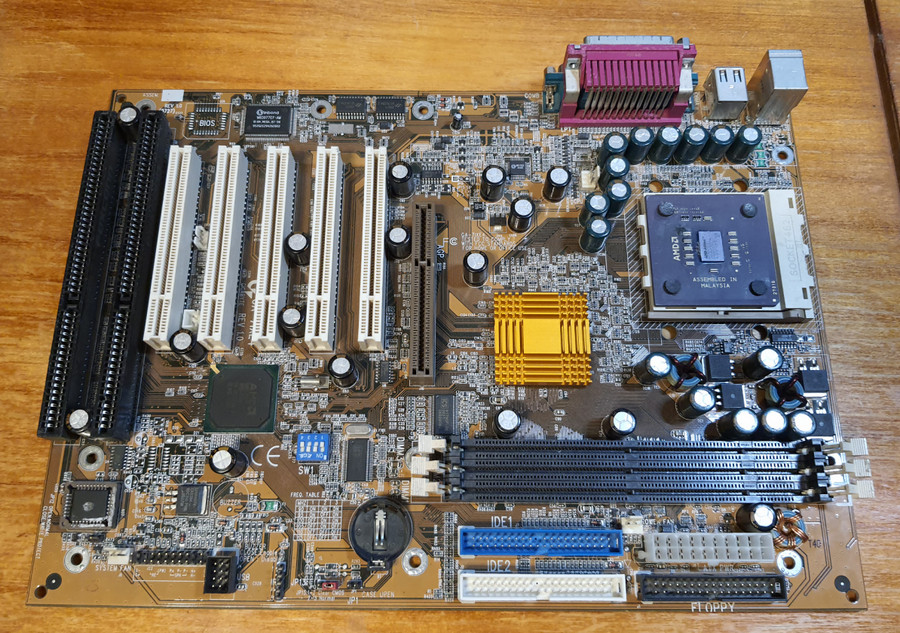
Advantages of 7IXE4 for a retro computer:
- Absolutely oak and stable. I don't remember having any problems with her at all.
- As many as 2 ISA.
Disadvantages:
- Three-volt AGP. You cannot install the latest video cards that need 1.5V.
- The maximum memory capacity is 768 megabytes.
- Bus speed of 100 megahertz and support for processors up to Athlon Thuderbird only. AthlonXP and corresponding Durons will not work fully here.
The first drawback is in the time interval I am interested in and not at all a drawback. Pure 1.5V boards appeared much later. But if you build the most versatile system, then AGP should be taken as a “universal” one.
The latter was not a particular problem at the current time, but today if you try to run Windows XP SP3, then the memory will not be enough. On the other hand, the 815 chipset can only be installed with 512 megabytes, and the BX, although it supports up to a gigabyte, is very capricious to memory and it can be quite difficult to get this gigabyte. Therefore, if you really want to have more memory on the s370 or SocketA, then you need to look at VIA's chipsets.
The third can be a problem when launching games and programs that require SSE. Although, according to rumors, there were BIOS patches that added support for processors with SSE, at my leisure I want to look in this direction.
Processor
At that time I had AMD Duron on this motherboard (I bought it with Duron 700, but at the end of its life it was already 1200).
The top Athlon Thunderbird was 1400MHz, but top-end retro processors are rare and expensive these days, so it's usually much easier and cheaper to get a pre-top one, which I did.
Athlon Thunderbird 1300B. Base frequency 100MHz, multiplier 13, cache size 2 levels - 256 kilobytes, voltage 1.75V, TDP 70W.
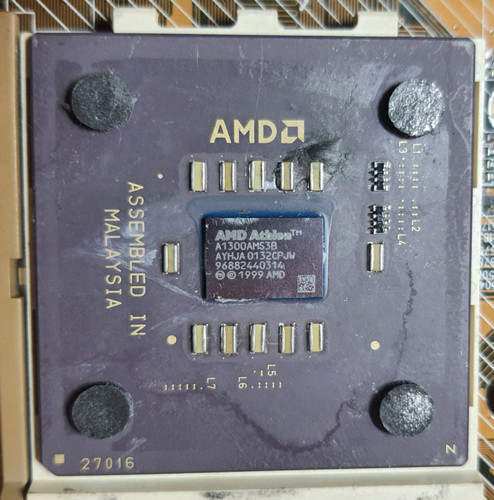
Disadvantages:
- SSE. MMX 3D Now! , SSE .
- , 5. 5 20 , — . - 100 ( , ), 70 , . , 30-35 .
As I wrote above, I want to dig into the BIOS in order to support newer processors, maybe it will turn out to stick in something less devouring and having SSE. I'm looking at Duron Applebred.
RAM
As a result, of course, I will put 3 * 256MB PC133 SDRAM here, but for now it will be 512 for the duration of the tests, so that it will be the same everywhere. Still, I decided to take a Geforce4 4200
video card with a
"basic" video card. Although I can put Geforce3, Voodoo4 or even Matrox G400 in my mood. Although, of course, it would be necessary to get something like a Radeon 8500 for the collection. I have a Radeon 9200, but this is somewhat different.
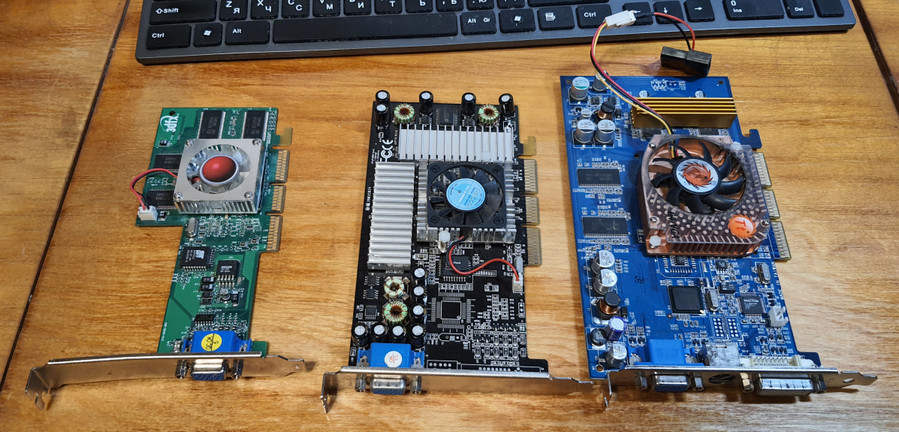
Sound card
The sound card can also be changed according to the mood, but I assigned the main one to the Audigy 2 Platinum - with a socket in a five-inch compartment.

And left in the wings is the Diamond Monster Sound MX300 for the A3D, the Yamaha 754 for the nostalgia and the XG-Midi and AWE64 as the ISA board.

Hard disk
In terms of storage media, I primarily proceed from convenience, not from authenticity. I don't like the noise of ancient hard drives, so I put the SSD through an IDE-SATA adapter. The volume would be best in the region of 60-80, but I didn't have anything smaller than 120 at hand.
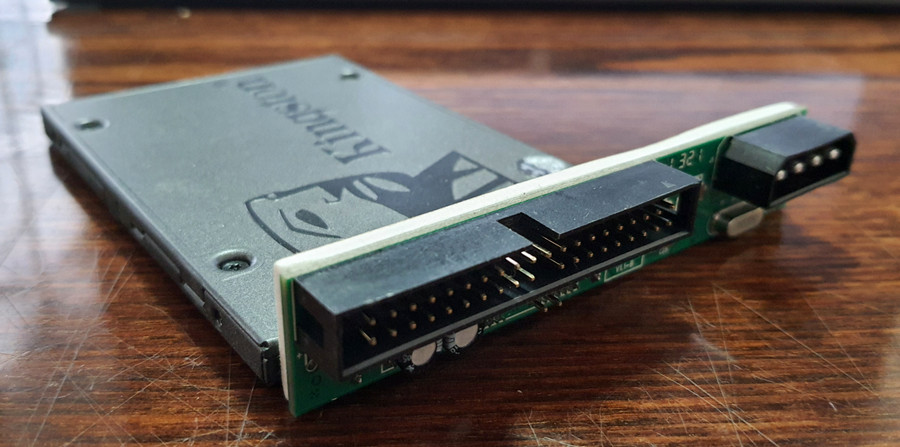
Optical drive
Here I wanted something outwardly interesting. I went through different options and eventually settled on Philips DVDR1640. It has a rather non-standard front panel, plus an interesting activity indication. He's a couple of years younger than everything else.
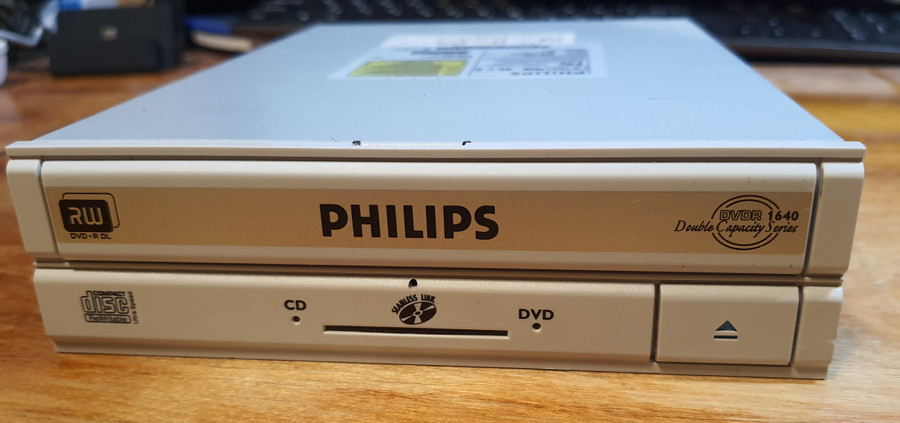
Case
If we are nostalgic for the full, then we also wanted the same case - Inwin A500.

Oddly enough, it is still quite popular. From the side - the usual ATX with a vertical power supply unit. But with one peculiarity - a slide-out tray for the motherboard, on which you can assemble the entire system, and then plug it into the case and connect the cables.
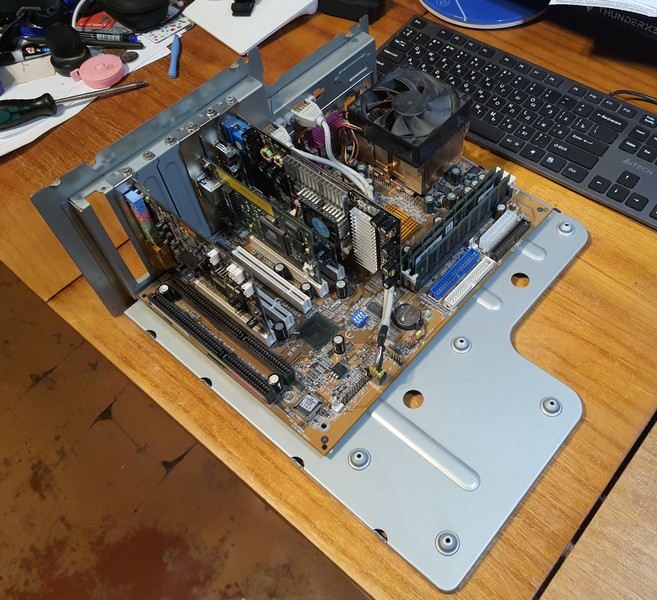
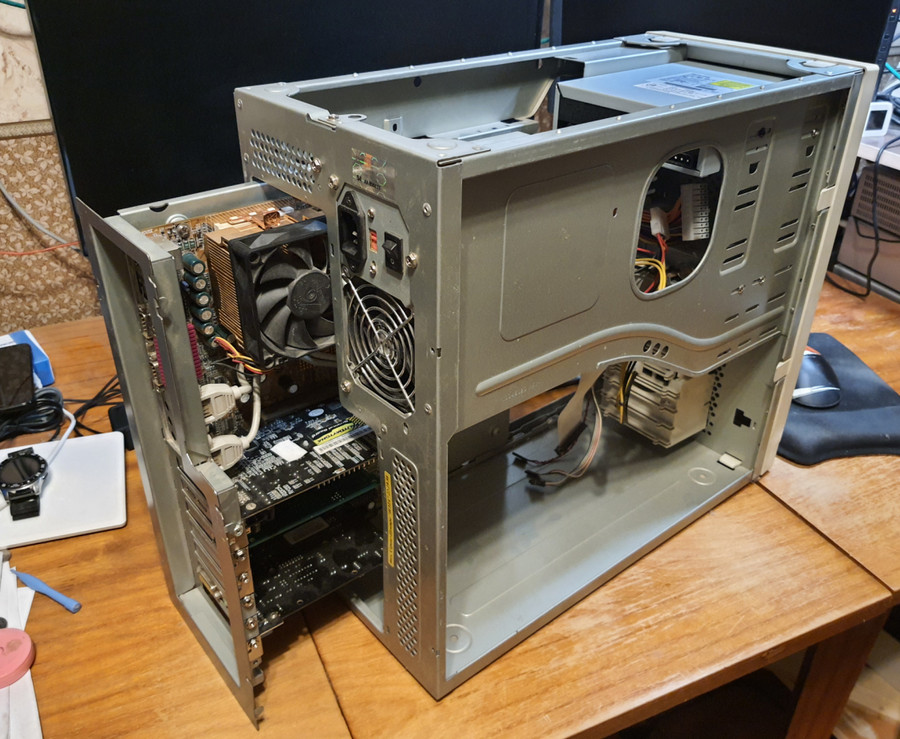
Of course, more modern cases with a horizontal power supply unit that does not cover the motherboard are convenient even without such a tray. But in those days, such a decision seemed better than removing the power supply to access the processor. Although here the design of the case will not allow you to reach the processor even with the power supply removed.
In general, the solution is interesting, but the practicality turned out to be less than it seemed initially. Therefore, at one time, I moved without unpleasant emotions to the Linkworld building with a power supply unit above the motherboard. Let it be more cardboard, but it was more convenient to dig, you did not have to pull out the cable once again. But, of course, I rearranged the power supply from inwin. Then I bought a Chieftec Dragon - there was both normal steel and comfortable insides. And the computer in the A500 worked for me as a home server for some time.
The rest
Disk drive - not really needed, but at that time it was still required.
The USB2 controller is both additional ports and a more or less decent data transfer rate relative to USB1.
The network card is the eternal realtek. They just work. Or they don't work. Although I can try 3com 905 if it starts.
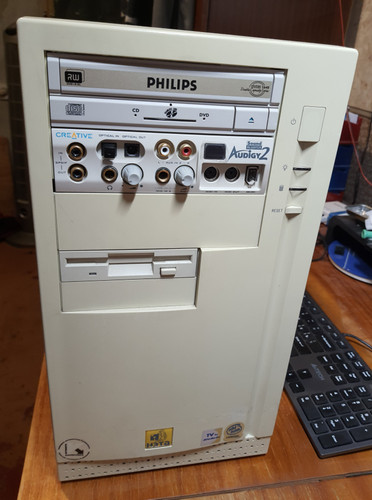
That's all for now. In the next part I will briefly describe the other tested platforms, since only processors and motherboards will change there. And in the third part I will run a few tests and try to evaluate all the options both from the point of view of retro and from the point of view of “that time”.